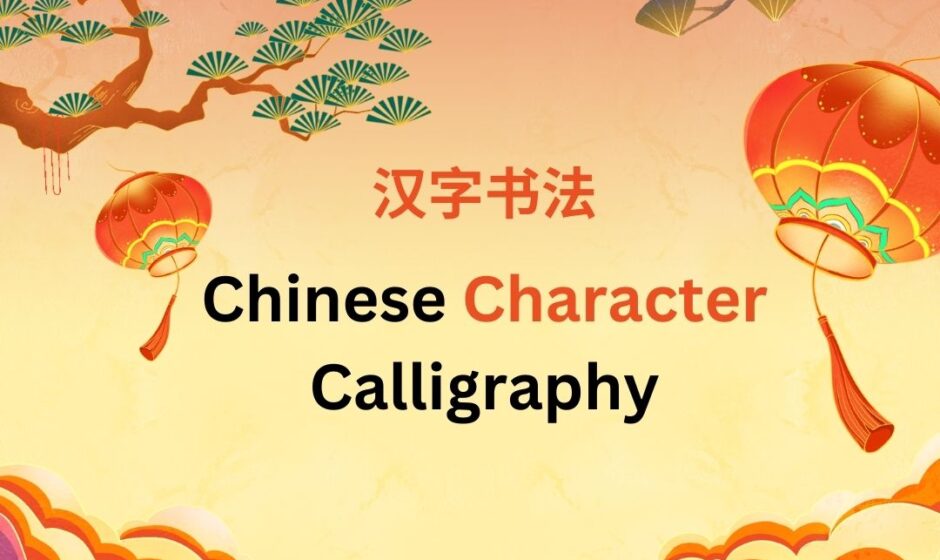Chinese character calligraphy is more than just beautiful writing; it is a vivid expression of culture, history, and philosophy. Every stroke captures not just a symbol, but centuries of thought, emotion, and discipline. For those who seek a deeper connection with Chinese traditions, understanding this art form unveils the soul of an entire civilization.
The Origins of Chinese Character Calligraphy
The roots of Chinese character calligraphy can be traced back over 3,000 years to the Shang Dynasty’s oracle bone inscriptions. These early characters were carved into bones and turtle shells, primarily for divination purposes. Over time, these primitive symbols evolved into more structured scripts, reflecting changes in Chinese society, governance, and artistic sensibility.
As China developed dynastically, so too did its calligraphy. Each period introduced new styles, fostering a living tradition that adapted while honoring its sacred origins. Chinese character calligraphy became a distinguished cultural treasure, regarded not merely as a method of communication, but as an art that revealed the character and intellect of the writer.
Evolution of Chinese Character Calligraphy Styles
Through the ages, Chinese character calligraphy evolved into several major styles, each marked by its own rules and aesthetics:
-
Seal Script (篆书, Zhuànshū): One of the earliest standardized scripts used during the Qin Dynasty. It features rounded forms and symmetrical structures.
-
Clerical Script (隶书, Lìshū): Developed during the Han Dynasty, it introduced broader, flatter strokes, making characters easier to write.
-
Regular Script (楷书, Kǎishū): Emerged during the Wei and Jin periods. This style remains the basis for modern printed Chinese.
-
Running Script (行书, Xíngshū): A semi-cursive style that balances speed and legibility, reflecting a more personal touch.
-
Cursive Script (草书, Cǎoshū): Highly abbreviated and fluid, cursive script is expressive, sometimes requiring an expert eye to interpret.
Each style tells a story, offering insight into the aesthetic values and daily life of different historical periods.
Tools of Chinese Character Calligraphy
The art of Chinese character calligraphy relies on the mastery of four essential tools known collectively as the “Four Treasures of the Study” (文房四宝):
-
Brush (毛笔, Máobǐ): Varying in softness and size, the brush enables dynamic stroke variation and texture.
-
Ink (墨, Mò): Traditionally made from soot and animal glue, ink comes in stick form and must be ground with water.
-
Paper (纸, Zhǐ): High-quality rice paper or xuan paper provides the right absorbency for brushwork.
-
Inkstone (砚, Yàn): A smooth stone surface used for grinding the inkstick into liquid ink.
Mastery over these tools allows the artist to infuse vitality and rhythm into each character, transforming simple writing into living art.
Symbolism Behind Chinese Character Calligraphy
Chinese character calligraphy is deeply symbolic. Every brushstroke is a meditation on balance, energy (气, qì), and intention. The flow of ink embodies a rhythm that parallels the flow of life itself. In traditional belief, good calligraphy reflects the moral character of the artist, showcasing inner virtues like patience, discipline, and harmony.
The structural balance of characters also symbolizes broader philosophical concepts. The interplay between black ink and white space mirrors the Taoist principles of Yin and Yang, while the discipline of practice echoes Confucian ideals of self-cultivation.
Chinese Character Calligraphy in Modern Times
Despite modernization and digitalization, Chinese character calligraphy continues to thrive. Schools across China teach calligraphy as a core part of the curriculum, instilling cultural pride from a young age. Many contemporary artists blend traditional methods with modern styles, creating new expressions that still honor ancient roots.
Global interest in Chinese character calligraphy is also on the rise. Art collectors, museums, and even digital platforms increasingly showcase calligraphic works. Workshops and exhibitions are organized worldwide, allowing people from diverse backgrounds to appreciate this intricate art form.
Moreover, luxury brands, fashion designers, and even tech companies incorporate calligraphic aesthetics into their designs, acknowledging its timeless elegance and cultural gravitas.
The Practice and Philosophy of Chinese Character Calligraphy
Practicing Chinese character calligraphy is not merely an artistic pursuit; it is often seen as a spiritual journey. Students must spend years mastering basic strokes before progressing to full characters and complex compositions. The emphasis is not on speed but on mindfulness, precision, and emotional expression.
Each session of practice is an exercise in patience. Artists focus deeply on each movement, aligning their mind and breath with the strokes. Over time, the practice cultivates a profound sense of inner calm and resilience.
In traditional Chinese thought, calligraphy practice is likened to a form of meditation, where the artist’s heart is revealed through the tip of the brush. True mastery goes beyond technical skill; it embodies authenticity and the pure spirit of the writer.
Collecting and Appreciating Chinese Character Calligraphy
For collectors, Chinese character calligraphy offers a tangible connection to history and personal expression. Ancient calligraphy scrolls, handscrolls, and albums are highly valued not only for their aesthetic beauty but also for their historical significance.
When appreciating calligraphy, experts consider various elements:
-
Stroke execution: The energy and fluidity of brush movements.
-
Character structure: Balance and proportion among components.
-
Composition: Overall harmony of the piece.
-
Spirit resonance (气韵生动): The life force that breathes through the work.
Unlike other forms of visual art, calligraphy does not rely on colorful imagery. Its monochromatic palette highlights the raw, unfiltered power of form and movement.
Learning Chinese Character Calligraphy Today
Embarking on a journey to learn Chinese character calligraphy opens doors to a richer understanding of Chinese culture. Beginners are encouraged to start with basic stroke exercises, progressing gradually to simple characters, then to full pieces.
Many online platforms offer guided courses, and purchasing a beginner’s calligraphy kit containing the four treasures makes practice accessible. Enthusiasts can also join local art communities, participate in workshops, or even travel to China to study under masters.
By practicing Chinese character calligraphy, learners not only acquire a beautiful skill but also step into an ancient tradition that emphasizes discipline, creativity, and deep cultural respect.
Final Thoughts
Chinese character calligraphy stands as a profound testament to the elegance, depth, and philosophical richness of Chinese culture. Every character tells a story; every brushstroke reveals a heartbeat from across the ages. Whether displayed in grand scrolls or practiced in quiet rooms, this timeless art form continues to inspire awe, reflection, and admiration.
Engaging with Chinese character calligraphy offers more than aesthetic pleasure—it invites a deeper journey into history, spirit, and the enduring power of human expression. Those who immerse themselves in this craft find that it is not just the art of writing but the writing of the soul itself.



